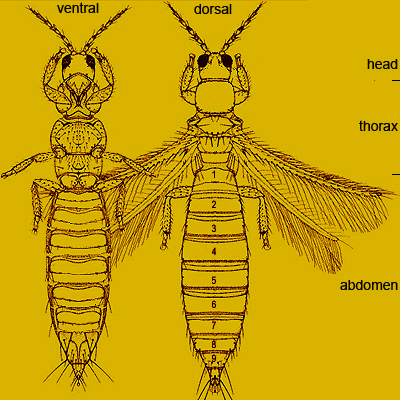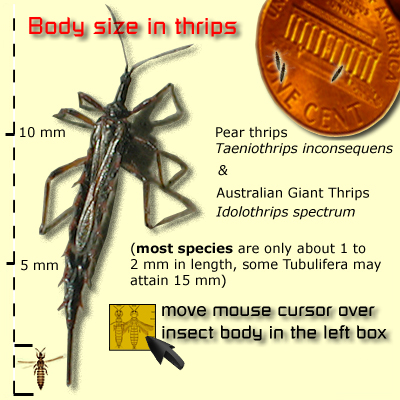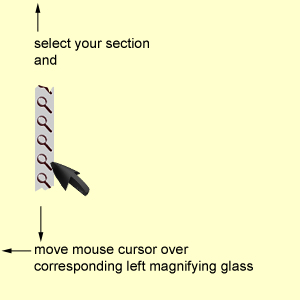| Particular attention is given to key characters, because it is essential that they be interpreted correctly. You can use additional photographs within the key when you are unsure of the character state discussed in the text. A double click on the character state thumbnail opens the related character state photograph and the mouse cursor will surround the important specific character state. | ||

|
 |
|
| (antecosta-campaniform
sensilla)
-> (cilia-craspedum) -> (cross
vein-furca) ->(gena-maxillary stylets)
-> (maxillary palps-ocellar setae) -> (ocellar triangle-posteroangular) -> (posteromarginal-setae) -> (spine-wing retaining setae) |
|
SPINE (Spinula):
Median process in some species on the anterior margin of the endofurca
on the meso- or/and metathorax. |
 |
SPINASTERNUM:
An intersegmental sclerite of the thoracic sterna bearing a spina. |
||
STERNITE:
Ventral sclerite of the abdomen. |
||
TARSUS: The leg
segment distal to the tibia, comprising 1 or 2 tarsomer segments, apically
bearing the pretarsal bladder. |
||
TERGITE: Dorsal
sclerite of an abdominal segment. |
||
TESTES: 2 containers
produce spermatozoa within tubular follicles. |
||
TIBIA:
Leg segment between femur and tarsus. |
||
VALVE:
Gonapophysis, forming one of two paired blad- and saw-like structures
supporting the oviposition procedure. |
||
VEIN:
Terebrantia have 3 longitudinal veins in the forewings, the costa along
the front margin, and the first and second vein. |
||
VERTEX:
Top of the head between compound eyes, frons and occiput. |
||
WING
RETAINING SETAE: S-shaped setae on the tergites mainly of
Phlaeothripidae. These setae enmesh with the marginal cilia on the
wings when the wings are not in use. |
Gordh, G & Headrick,
D (2001): A dictionary of Entomology. CABI Publishing, Oxon & New
York, 1032 pp. |
Gullan, PJ & Cranston,
PS (1994): The Insects: An Outline of Entomology . Chapman
and Hall, London. 491 pp. |